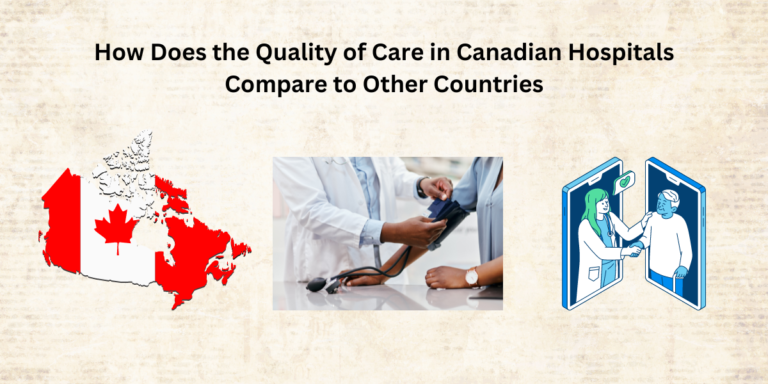Maximizing Resources in Health Care
The health care industry is a complex and dynamic environment where the efficient use of resources can mean the difference between life and death. Health resources encompass a broad range of elements, from medical equipment and supplies to human expertise and technological innovations. In this context, health care optimization isn’t just a buzzword – it’s a vital strategy to ensure that the right resources are available at the right time for the right patients.
This article will explore the importance of maximizing resources in health care and offer practical strategies for health optimization. Whether you’re a health care provider, administrator, or policy-maker, understanding and implementing these strategies can contribute to the improvement of patient outcomes, cost reduction, and the overall enhancement of health care services.
The Importance of Health Care Optimization
Health care optimization is about doing more with less. It involves the careful coordination of resources to meet the demands of patients effectively while minimizing waste and inefficiencies.
Meeting Patient Needs Efficiently
With an aging population and the rise in chronic health conditions, the demand for health care services is increasing. Health care optimization ensures that facilities are equipped to handle these growing needs without overextending their capabilities or compromising the quality of care.
Reducing Health Care Costs
Health care systems around the world are grappling with soaring costs. By maximizing the use of resources, health care facilities can reduce unnecessary expenses and direct funds towards areas that need it most, such as patient care and innovation.
Improving Access to Health Care
In many regions, access to health care is a significant issue. Optimization strategies can help extend services to underserved communities by making better use of existing resources and identifying areas where additional resources can make the most impact.
Strategies for Health Care Optimization
Maximizing resources in health care requires a multifaceted approach. Here are some strategies that can help achieve health optimization.
Streamlining Operations
Efficient health care operations can significantly reduce costs and improve patient care. This might involve automating administrative tasks, optimizing patient flow, or implementing lean management techniques to minimize waste.
Leveraging Technology
Advancements in technology offer numerous opportunities for health optimization. From telemedicine to electronic health records and predictive analytics, technology can enhance the delivery of care while also improving resource allocation.
Encouraging Preventive Care
Focusing on preventive care is an effective way to optimize health resources. By investing in public health initiatives and encouraging patients to take proactive steps in maintaining their health, the burden on health care facilities can be reduced.
Training and Development
Investing in the training and development of health care professionals ensures that they are well-equipped to meet the needs of patients. Ongoing education can also help staff adapt to new technologies and best practices in health optimization.
Health Care Optimization in Practice
Case Management Programs
Case management programs are designed to coordinate care for patients with complex health needs. These programs often involve a team of health care professionals who work together to develop and implement a comprehensive care plan, which can lead to better health outcomes and more efficient resource use.
Integrated Health Systems
Integrated health systems bring together various health care services and providers to offer coordinated care. This integration can lead to improved patient experiences, reduced duplication of services, and optimized use of resources.
Resource Allocation Models
Developing and utilizing resource allocation models can help health care facilities prioritize their spending and resource distribution. These models take into account factors such as patient demographics, health trends, and available resources to make informed decisions.
Challenges in Health Resource Optimization
While the benefits of health care optimization are clear, there are challenges that need to be addressed to implement these strategies effectively.
Balancing Cost and Quality
One of the primary challenges is finding the right balance between reducing costs and maintaining high-quality care. Cost-cutting measures should never compromise patient safety or the standard of care provided.
Navigating Regulatory Requirements
The health care industry is heavily regulated, and navigating these regulations can be complex. Ensuring compliance while pursuing optimization efforts requires a thorough understanding of the legal landscape.
Managing Change
Change management is critical when implementing new strategies or technologies. Health care providers must be prepared to manage resistance and ensure that staff are adequately trained and supported through transitions.
The Role of Leadership in Health Optimization
Leadership plays a crucial role in driving health care optimization. Effective leaders can:
Set Clear Goals and Expectations
Leaders must articulate a clear vision for optimization and set measurable goals. This helps align all stakeholders and provides a roadmap for success.
Foster a Culture of Continuous Improvement
Creating a culture that values continuous improvement encourages staff to seek out and implement optimization strategies.
Support Innovation
Leaders should support innovation by allocating resources to research and development and encouraging staff to think creatively about solving problems.
Conclusion
Maximizing resources in health care is essential for delivering high-quality care, improving patient outcomes, and ensuring the sustainability of health care systems. By implementing strategies such as streamlining operations, leveraging technology, and focusing on preventive care, health care facilities can optimize their resources effectively.
The road to health optimization may be challenging, but with the right leadership, collaboration, and a commitment to continuous improvement, it’s a goal that can be achieved. It’s not just about saving money or resources; it’s about creating a health care system that works better for everyone involved, especially the patients who depend on it.
In the end, health care optimization is an ongoing process that requires dedication and adaptability. As the health care landscape continues to evolve, so too must the strategies for maximizing resources. With a focus on efficiency, quality, and innovation, health care providers can ensure they are ready to meet the needs of their patients now and in the future.










